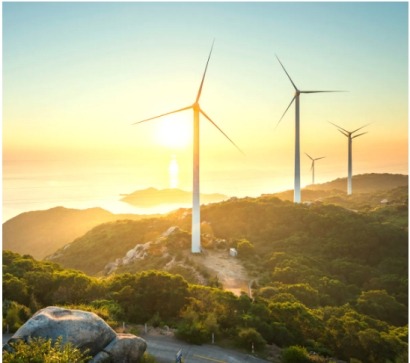
Despite an increasing penetration of renewables into the energy system in recent years, the energy system of today is still vastly fossil based, thus contributing to the ongoing climate crisis. H2MOF considers the wider adoption of hydrogen as a crucial stepping stone towards a truly sustainable and decarbonized energy system.
"Hydrogen fuel has the highest energy density among all combustible fuels; at the same time, it has zero emissions", explains Sir Fraser Stoddart, co-founder of H2MOF, and continues: "these reasons are among the key drivers toward considering hydrogen energy as the best choice for a sustainable and clean future for humankind."
Today, storing hydrogen often involves compressing or liquefying it by cooling it down. These conversions use a significant amount of energy and therefore are inefficient and expensive.
H2MOF takes a different approach, capitalizing on decades of discoveries and advancement in reticular chemistry and artificial molecular machinery to develop novel materials designed with atomic precision to tackle the challenging properties of hydrogen molecules.
"Hydrogen is the most abundant element in the universe. It's the lightest element, and therefore it is very challenging to store and transport in an efficient and safe way", says Professor Omar Yaghi, co-founder of H2MOF.
"Over the past two decades, I've been working on improving the efficiency of hydrogen storage materials based on reticular chemistry, and we've made a lot of progress."
The global demand for hydrogen is expected to increase significantly in the years to come. The European Union (EU) has set ambitious goals, that include the production of 10 million tons of green hydrogen in the EU by 2030.
The U.S., too, is investing in hydrogen's potential to decarbonize the economy. The Infrastructure Investment and Jobs Act allocates $8 billion in grants to regional hydrogen projects. The Inflation Reduction Act establishes a tax credit of up to $3 per kilogram of hydrogen for production with the lowest associated emissions.
Reticular chemistry, and specifically MOF technology, has received wide interest and recognition worldwide as a promising technology for solving the hydrogen storage challenge. The US Department of Energy listed MOF technology as a leading technology candidate to solve the hydrogen storage challenge.
There are also several research programs that include consortiums from multiple reputable research institutions from multiple European countries, funded by the EU, that focus on MOF technology to develop more efficient hydrogen storage solutions.
Dr. Samer Taha, CEO of H2MOF elaborates, "Our technology aims at significantly cutting the energy penalty associated with storing hydrogen using high-pressure tanks or associated with liquefying hydrogen. Our technology roadmap targets the development of hydrogen storage solutions that can achieve high storage density at ambient temperature and at pressures as low as 20 bar, which is less than 3% of the pressure of some of the high-pressure 700-bar hydrogen storage tanks used in the industry today."
Taha added that "our technology relies on our novel material that attracts hydrogen molecules towards the nano-scale cavities of the material. This bonding then retains the hydrogen molecules inside the novel material while also allowing for their efficient release when required."
H2MOF is currently working on the optimization and scaling of the novel material and on the integration of its hydrogen storage solution. Ultimately, the product offerings will be targeting several application areas including long-term storage of hydrogen, storage of hydrogen during long-distance transportation, and - when used as a fuel for transportation - solutions for various means of transportation such as light-duty vehicles, heavy duty trucks, trains, ships, and airplanes.

